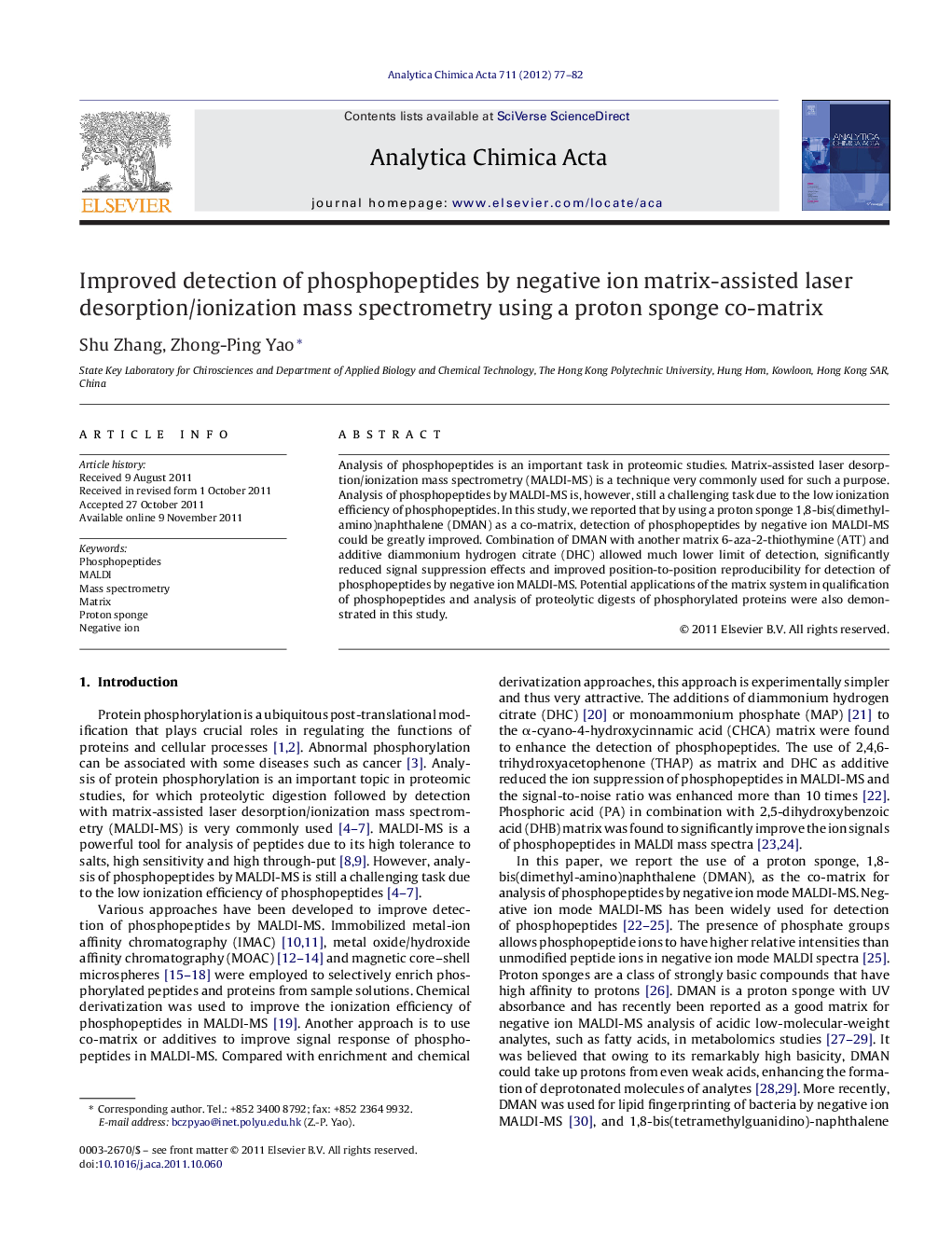| Article ID | Journal | Published Year | Pages | File Type |
|---|---|---|---|---|
| 1167005 | Analytica Chimica Acta | 2012 | 6 Pages |
Analysis of phosphopeptides is an important task in proteomic studies. Matrix-assisted laser desorption/ionization mass spectrometry (MALDI-MS) is a technique very commonly used for such a purpose. Analysis of phosphopeptides by MALDI-MS is, however, still a challenging task due to the low ionization efficiency of phosphopeptides. In this study, we reported that by using a proton sponge 1,8-bis(dimethyl-amino)naphthalene (DMAN) as a co-matrix, detection of phosphopeptides by negative ion MALDI-MS could be greatly improved. Combination of DMAN with another matrix 6-aza-2-thiothymine (ATT) and additive diammonium hydrogen citrate (DHC) allowed much lower limit of detection, significantly reduced signal suppression effects and improved position-to-position reproducibility for detection of phosphopeptides by negative ion MALDI-MS. Potential applications of the matrix system in qualification of phosphopeptides and analysis of proteolytic digests of phosphorylated proteins were also demonstrated in this study.
Graphical abstractFigure optionsDownload full-size imageDownload as PowerPoint slideHighlights► Use of ATT/DMAN/DHC matrix for detection of phosphopeptides by negative MALDI-MS. ► Lower limit of detection. ► Reduced signal suppression effects. ► Improved position-to-position reproducibility.
